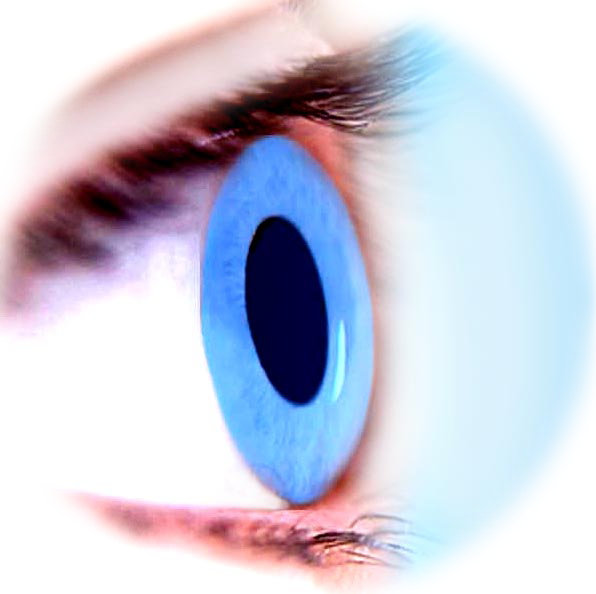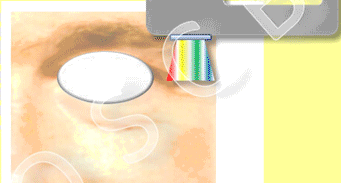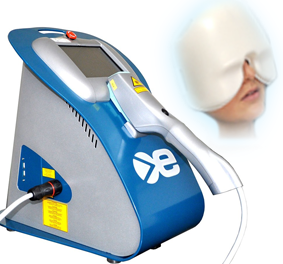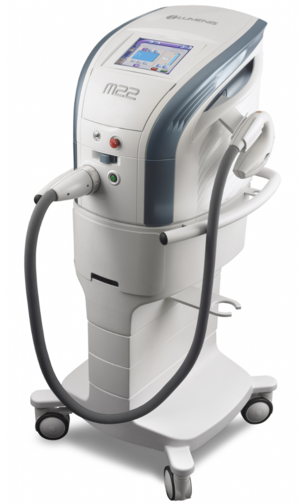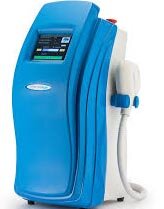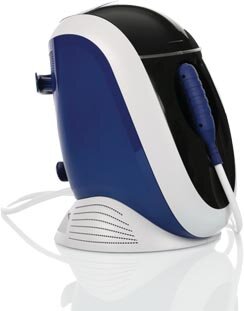Intense Pulsed Light (IPL) - for Meibomian Gland Dysfunction (MGD)
IPL is a treatment with intense white light from a flash lamp. The flashes are applied to the skin around the eye while the eye itself must be covered.
=> Here is some deeper information about IPL pulsed light therapy.
IPL comes from the field of dermatology. According to studies, IPL is also effective in the skin-related Meibomian Gland Dysfunction (MGD), even in cases that previously appeared resistant to therapy.
IPL is carried out in therapy cycles of several sessions
IPL devices differ to some degree. Generally, the procedure has to be carried out in a doctors practice and is done in therapy cycles of 3-4 sessions at intervals of a few weeks. A typical therapy scheme is an initial two sessions with about 14 days interval and a further two or more sessions at about 1 month interval.
The IPL light applicator is typically coupled to the skin by a gel
The strong light is applied to the skin through a hand-piece (applicator). Most devices require a gel between the applicator surface and the skin to provide optimal light transmission. The contact gel is similar to an ultrasound gel and is not very welcome to every patient.
A device with a large applicator surface area and no need for a gel is the EyeLight IPL. It has the additional advantage that it can also perform Low Level Light Therapy (LLLT) COLOR Light Therapy that is used in order to make the MGD treatment more effective. LLLT is, according to studies, also effective in the therapy of hailstone (chalazion).
